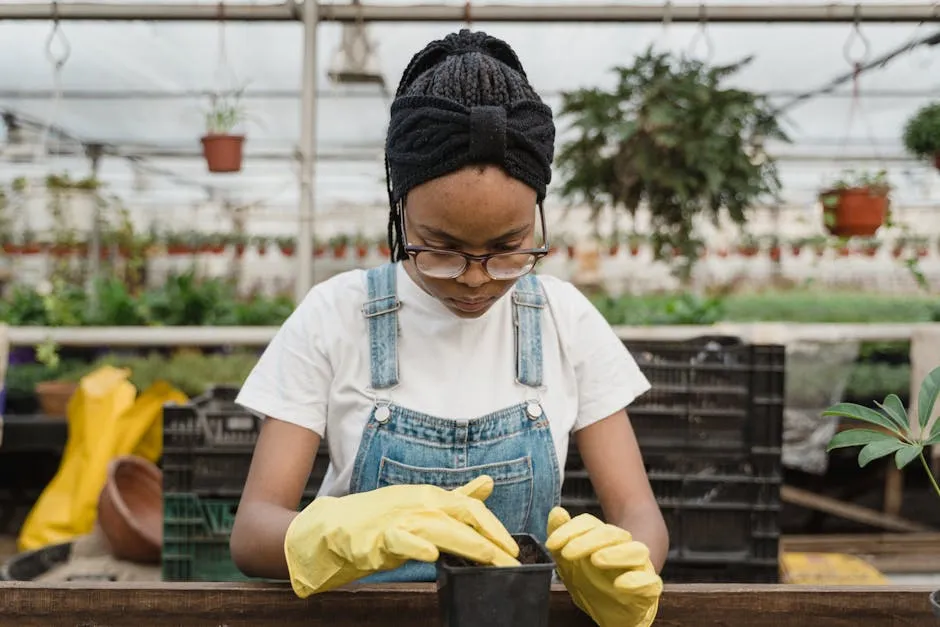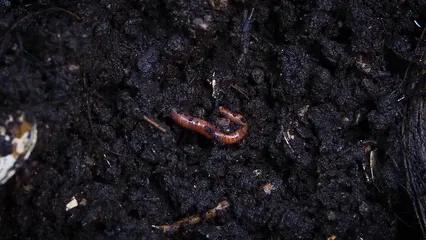

Soil Testing Guide: Everything You Need to Know
Introduction
Soil testing is crucial for both agriculture and horticulture. It helps you understand your soil’s health. This knowledge is vital for optimal plant growth. This guide aims to help you navigate soil testing easily and effectively.
Before you dive in, consider using a Soil Test Kit for Garden and Lawn. This handy tool allows you to measure your soil pH and nutrient levels right at home, giving you a head start on your gardening journey!
Summary and Overview
Soil testing plays a significant role in agriculture. It helps determine nutrient levels and soil pH. Knowing these factors influences fertilization decisions and ultimately boosts crop yields. Various soil tests are available, each serving a unique purpose. Regular soil testing offers numerous benefits, including improved soil health and sustainable farming practices. By understanding your soil, you can make informed decisions that enhance productivity while protecting the environment.
Understanding the importance of soil testing can significantly impact your farming practices. Learn more about improving soil health.
For those who want to take their testing up a notch, consider a Soil Moisture Meter. This nifty gadget helps you understand when your plants are thirsty, saving you from the dreaded overwatering situation.
Why is Soil Testing Important?
Soil testing is essential for gardeners and farmers alike. It reveals the nutrient content of the soil, which directly impacts crop yields. By understanding nutrient levels, you can apply fertilizers more efficiently, saving money in the process. Targeted fertilization reduces waste and can prevent nutrient runoff into water systems, promoting environmental health.
Moreover, soil testing supports data-driven decision-making. With accurate information, you can identify deficiencies and adjust practices accordingly. This approach not only enhances crop production but also contributes to sustainable agriculture. Overall, soil testing is a fundamental practice for optimizing plant growth while safeguarding our natural resources.
For those looking to dive deeper into organic practices, grab a copy of Organic Fertilizer. It’s the natural way to boost your soil’s nutrients without the chemical overload!

Types of Soil Testing
Understanding soil quality starts with testing. Various methods assess soil characteristics, helping you make informed decisions. Let’s break down the main types of soil testing you might encounter.
Physical Soil Tests
Physical tests focus on soil structure and texture. They determine how well soil holds water and air. These tests assess particle size distribution, porosity, and drainage capabilities. A well-structured soil promotes healthy root growth and nutrient absorption.
Chemical Soil Tests
Chemical tests analyze soil’s nutrient content and pH levels. These tests measure essential macronutrients like nitrogen, phosphorus, and potassium. They also evaluate micronutrients such as zinc and copper. A critical component is the soil pH, which affects nutrient availability. Knowing these factors helps tailor your fertilization strategy. For more information on soil pH, refer to our guide on soil pH testing and adjustment.
Adjusting your soil pH is crucial for optimal plant growth. Explore our comprehensive guide on soil pH.
Speaking of which, if you’re keen on maintaining that ideal pH, check out the Soil pH Meter. It’s a handy tool to monitor your soil’s acidity or alkalinity, ensuring your plants get the nutrients they crave.

Biological Soil Tests
Biological tests evaluate the soil’s microbial activity. Healthy soil teems with beneficial microorganisms that enhance nutrient cycling. Testing for microbial populations gives insights into soil health. A thriving microbial community indicates a balanced ecosystem, essential for sustainable farming.
Specialty Tests
Specialty tests dig deeper into specific soil issues. For instance, salinity tests measure salt levels, which can hinder plant growth. Cation Exchange Capacity (CEC) tests assess the soil’s ability to retain nutrients. Total nutrient digestion tests provide a comprehensive view of nutrient availability. Each of these tests offers unique insights into soil management.

How to Collect Soil Samples
Collecting soil samples accurately is vital for reliable testing results. Follow these steps for effective sampling.
- Choose Sampling Locations: Start by identifying representative areas in your field or garden. Look for variations in soil type, vegetation, and previous management practices. Aim to avoid areas influenced by equipment traffic or unusual plant growth.
- Decide on Sampling Depths: For most crops, a depth of 6 to 8 inches is ideal. However, adjust based on the specific needs of your soil and plants. Consistency is key—maintain the same depth across all samples to ensure comparability.
- Gather Your Tools: Use a clean soil probe, auger, or spade to collect samples. Ensure your tools are free from contaminants to avoid skewing results.
- Collect Multiple Cores: For each sample, take at least 10 cores in a zigzag pattern across the area. This creates a composite sample that accurately represents the site.
- Mix Samples Thoroughly: After collecting all cores, combine them in a clean bucket. Mix well to create a uniform sample, breaking up clumps and removing debris.
- Fill Sample Bags: Transfer the mixed sample into labeled soil sample bags. Be sure to include all relevant information, such as location and depth, on the label.
- Submit Your Samples: Follow the instructions provided with your soil sample kit for submission. Timely submission ensures quicker results.
By following these steps, you can collect soil samples that provide valuable insights into your soil’s health, guiding your gardening or farming decisions effectively.

Interpreting Soil Test Results
Understanding soil test reports can feel overwhelming. However, it’s essential for effective soil management. Let’s break down some common terms and how to act on your findings.
First, you’ll often see Cation Exchange Capacity (CEC). This measures how well your soil retains nutrients. A high CEC means better nutrient holding capabilities. Next, pH indicates the acidity or alkalinity of your soil. Most crops thrive in a pH range of 6.0 to 7.5. If your soil’s pH is too low or high, it can limit nutrient availability.
Then there are nutrient levels, usually listed as macronutrients (N, P, K) and micronutrients (like Zn and Cu). Each nutrient plays a distinct role in plant health. For instance, nitrogen promotes leafy growth, while phosphorus supports root development.
After receiving your report, what’s next? If nutrient levels are low, you may need to amend your soil. This could mean applying specific fertilizers or organic matter. For high nutrient levels, you might want to reduce fertilizer use to avoid plant stress and environmental harm.
Consulting a soil expert can be beneficial, especially if you’re unsure about your results. They can help interpret the data and recommend suitable actions. Remember, the goal is to create a thriving environment for your plants.

Frequency of Soil Testing
How often should you test your soil? The answer largely depends on several factors, including soil type and crop rotation. Generally, sandy soils require more frequent testing than clay soils. This is due to their tendency to lose nutrients quickly.
For sandy soils, testing every 1-2 years is advisable. Clay soils, being more nutrient-retentive, can typically be tested every 2-4 years. Additionally, if you change crops or notice issues like poor growth, it’s wise to test your soil sooner.
Timing also matters. The best times for testing are late fall or early spring, before planting. Testing at these points provides a clear picture of your soil’s condition, allowing for timely amendments.
Regular soil testing helps maintain soil health and ensures efficient nutrient use. By keeping track of changes over time, you can make informed decisions for your gardening or farming needs. So, mark your calendars and stay proactive!

Choosing a Soil Testing Laboratory
Selecting the right soil testing laboratory is essential for accurate results. Start by checking for certifications. A reputable lab should have relevant accreditations. These ensure they meet industry standards for quality and reliability.
Next, consider the lab’s reputation. Look for reviews or testimonials from other customers. A lab with positive feedback is likely to provide trustworthy results. Additionally, compare the services offered by different labs. Some may provide comprehensive testing packages, while others may only focus on specific analyses.
Consistency in testing methods is crucial as well. Labs should follow standardized procedures to guarantee that results are comparable over time. This consistency helps in tracking changes in soil health and nutrient levels. By choosing a reliable laboratory, you set the foundation for effective soil management and improved crop productivity.

Benefits of Biological Soil Testing
Biological soil testing offers a different perspective compared to traditional methods. While conventional tests focus on nutrient levels, biological testing examines the soil’s microbial communities. These microorganisms play a vital role in nutrient cycling. They help break down organic matter, making nutrients available to plants. Understanding these communities can enhance soil health.
Another advantage is the ability to identify hidden nutrient deficiencies. Traditional tests may miss subtler signs of nutrient imbalances. Biological testing can reveal issues related to microbial activity, which might indicate underlying problems. This insight allows for targeted interventions that enhance soil fertility.
Moreover, biological testing fosters long-term soil health management. By monitoring the microbial ecosystem, you can develop strategies that improve soil structure and resilience. A healthy soil microbiome leads to improved plant growth and yields. Emphasizing biological testing can transform how you approach soil management, leading to sustainable practices that benefit both the environment and your crops.

If you’re eager to explore biological soil testing further, consider picking up a Soil Amendments Guidebook. It’s packed with insights on how to improve your soil quality sustainably!

Conclusion
Soil testing is vital for sustainable agriculture. It helps you understand nutrient levels and soil health. Regular testing not only enhances crop yields but also promotes environmental stewardship. By identifying nutrient deficiencies, you can make informed fertilization decisions. This targeted approach reduces costs and minimizes waste.
We encourage you to adopt a routine soil testing practice. The benefits are clear: healthier crops and a healthier planet. Start testing today, and watch your garden or farm thrive!

FAQs
What is soil testing?
Soil testing analyzes the nutrient content and pH of soil. It helps determine what plants need for optimal growth.
How often should I test my soil?
Test sandy soils every 1-2 years. Clay soils can be tested every 2-4 years.
What should I do if my soil test shows nutrient deficiencies?
Amend your soil with the recommended fertilizers based on the test results. This will help restore nutrient balance.
Can I test my soil at home?
Yes, home testing kits are available, but lab tests provide more accurate results.
What types of samples should I take for testing?
Collect samples from various areas, mixing them to create a composite sample that represents your garden or field.
Before you go, make sure you’re prepared for your gardening adventures! A pair of good gardening gloves is essential to keep your hands protected while you dig in the dirt!
Please let us know what you think about our content by leaving a comment down below!
Thank you for reading till here 🙂
All images from Pexels



